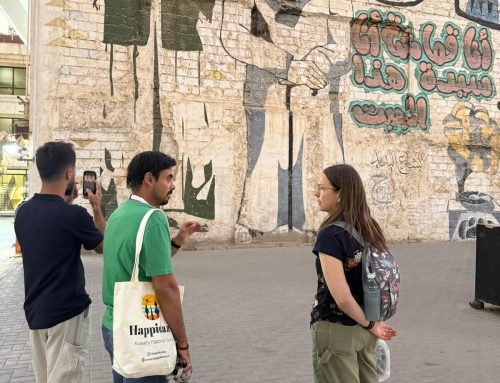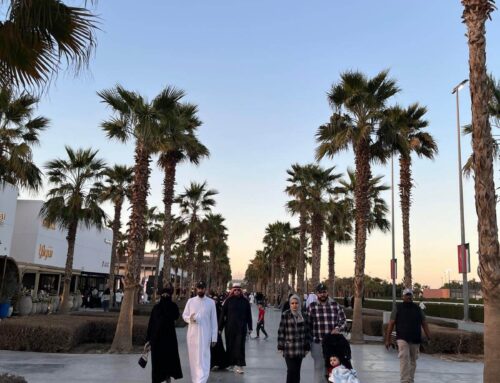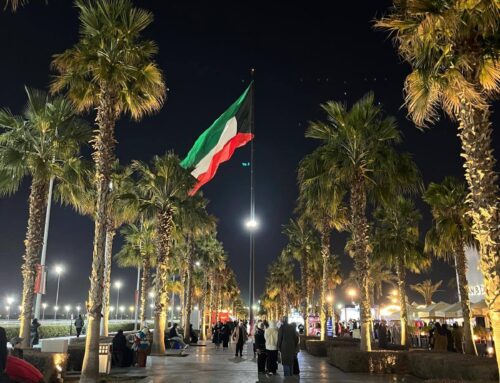Tea From Around the World
Tea is something I never liked. I didn’t understand the nuance and intricacies about it. I didn’t know that tea from around the world can be different! I didn’t know how each culture treats it, how it’s respected around the world, and the various tea ceremonies that exist around it. After living in China, I was able to get into Chinese tea. To learn more about Chinese tea click here to read my blog post specifically about Chinese tea.
However, I now live in Kuwait and have traveled all around the Middle East and India. These places have their own unique way to prepare and serve tea. I want to share with you all that I have learned about preparing and drinking tea in different countries. I personally think Chinese tea is the best because it’s the purest form. Chinese tea is just leaves and water. While other countries have tried to replicate it, it seems that the quality of the tea can never match the original. Therefore many countries’ tea traditions now include adding milk and sugar to mask the lower quality of tea. That doesn’t mean I don’t like it, it’s just different with milk and sugar. So let’s take a look at each country and see how they make tea.
Middle East and GCC countries
Tea was first introduced to the Arab world from China during the Shang Dynasty (1766-1050 BC) through the silk road. Nowadays, the black tea often comes from Sri Lanka (Ceylon variety), Azerbaijan, or Iran. In this area, tea is a sign of hospitality and is offered to guests. There are two main styles of tea: either black tea bags with fresh mint or black tea with milk and sugar.
While there is nothing wrong with a black tea bag, it can be basic. Many restaurants will also offer fresh mint leaves to add directly to your tea. It’s quite refreshing.
This region has honed their craft with milk, sugar and spices in the form of karak tea. Karak tea is a spiced, sweetened milk tea that is made in the region. It is made by boiling water with sugar in it. You then add the black tea to the sugared boiling water. You also add ginger and spices at this point. Usually cardamom is used. You then simmer for 5-7 minutes. After this you add milk and simmer until thickened. Strain the tea and serve.
This region serves tea in a specific, tulip shaped glass. The glass in Arabic is called an istikan which is designed to be thin-rimmed that is wider at the top and curves inward and opens again at the base. The same glass is used with Turkish tea.


Turkey
The country of Turkiye grows most of their tea in the Rize Province on the Black Sea coast, which has an ideal climate with abundant rainfall, mild temperatures, and high humidity – perfect conditions for tea cultivation.
The final product of Turkish tea isn’t full leaf, instead it’s brewed in small pieces. To make Turkish tea, start by boiling two pots of water. In Turkish this two stacked teapot system is called a çaydanlık. In the smaller teapot, bring the water to a boil then add 1 teaspoon of tea for every 100 ml glass you will serve. Boil the tea for 10 minutes. This will make very strong, concentrated tea. Fill the tulip type of glass (istikan) with ⅓ of the tea concentrate and the rest of the glass with the hot water from the second teapot. The tea should be a red color. Either drink as is or you can add sugar to it if you like.
Tea in Turkey is a way of life and you will find it served all over the country. Every shop owner serves it to guests, every cafe, after every meal, it’s everywhere. Pro tip: if you are traveling in Turkey, don’t drink a full glass of the concentrated tea. Make sure to cut it with hot water like the locals do!


India
Indian tea or chai starts with a base of black tea. India has a few tea growing regions like Assam, Darjeeling, and Nilgiri. When making Indian tea which is often called masala chai, start by getting the spices. These can be cardamom, cloves, cinnamon, pepper, ginger, fennel, nutmeg, anise, or a combination of many of them. Crush the spices and add black tea. Bring this mixture to a boil and then simmer for 2 to 3 minutes. Then add sugar. Finally add the milk. After this is done you can aerate the tea by pouring the tea back and forth between the mixing cup and the serving cup. When this is finished you strain the contents and serve.
When we were in India, we had too many of these because you can drink them for breakfast and they are served every afternoon for a tea break. It was a very nice routine, however after a while this becomes a lot of sugar and milk intake.


Taiwan
Did you know that boba (bubble tea, pearls, etc.) was invented in Taiwan? Of all of the ways to add sugar and milk to tea, Boba is my favorite. I specifically like brown sugar boba tea. This is a sugary tea drink that is not very tea forward, but tastes amazing.
Here is how to make it. First prepare the boba part of the tea which is tapioca pearls. These can be made by hand or you can buy premade ones. Then marinate the tapioca in a sweet sauce or syrup. I like the brown sugar syrup. Brew very strong black tea. Pour the tea into a glass with the syrupy tapioca balls and then finish it up with milk. Again this is not something I should probably drink every day due to the calories, but when we were in Taiwan we may have had at least 2 a day.
Taiwan also has some pure tea as well. They are most well known for their oolong teas. These include Baozhong, High Mountain Oolong, Dong Ding, and Oriental Beauty (Dong Fang Mei Ren). In the Chinese Tea article, I talked about the complex process of making oolong tea.
One of these teas, Dong Fang Mei Ren (Oriental Beauty) is one of my favorite teas ever. It is very unique in how they make it. When the tea is growing they allow bugs to bite the tea, which changes the flavor of the tea because the plant sends a chemical to get rid of the bugs. This chemical, however, makes the tea taste very sweet and flowering. If you ever get a chance to try it, let me know what you think!



Thailand
Thai tea is also pretty delicious. To make Thai tea you start with brewing the tea mixture. Thai tea is black tea but usually also has orange dye (which gives it its signature color) and flavorings including vanilla. Add the tea mixture to a pot and boil it adding the sugar during this step. Let it brew until the color is a dark reddish orange. Then strain the tea using what is called a straining sock and cool it to room temperature. Finally refrigerate until cold. Once chilled pour the tea over an ice filled cup ¾ full. Fill the rest of the cup with half and half. Stir and enjoy.


Overall, tea in the world is so vast and served in a variety of different ways. We’ve barely begun to scratch the surface of this interesting commodity. We’ve heard such fascinating things about matcha in Japan, rooibos in South Africa, and yerba mate in South America. We are excited to keep learning more about not only the tea but also the people behind the tea!
Discover more from Penley Perspective
Subscribe to get the latest posts sent to your email.




